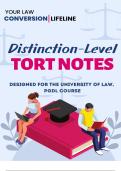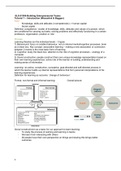Summary
Summary Tort Law Notes (DISTINCTION) for University of Law Post Graduate Diploma in Law (PGdL) course
- Module
- Tort Law (PGDL)
- Institution
- University Of Law (ULaw)
Distinction level Tort Law notes (received an average of 84 using these notes) Crafted by a recent graduate who received a distinction in the very same course, these notes are tailored to your PGDL program, ensuring they cover the crucial Tort Law concepts you need to master. Aligned with th...
[Show more]




